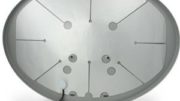This is a rumor that just won’t quit. Unfortunately there is a lot of confusion about what’s going to happen to AT&T’s satellite service this year and detailed information is hard to find. It seems like there are still changes being made to the plans, but let’s get one thing straight:
The 101 satellite location is not going away.
The two satellites at the 101 degree location aren’t going anywhere. Yes they are old but they are still functioning perfectly and still have enough fuel for the future. There are no plans to retire any of the satellites in this location.
The confusion comes because AT&T is retiring the satellite at the 119 degree location. That satellite was used for about 20% of the standard definition local channels, plus some music and special-interest national channels. AT&T has already moved all the national content to another satellite. Fairly soon the rest of the content will simply go away.
But I’ll say it again, the 101 satellites aren’t going away, no matter what you’ve heard.
Why is this happening now?
The 119 degree satellite location was never really the right choice for DIRECTV Satellite. It’s very far west and hard to aim for. The satellite has always contained only standard definition content. Very, very few people watch SD anymore… the only people who do are marine and RV users who can’t afford or don’t want HD equipment.
All satellites have a fixed lifespan. Even though they run on solar energy, they have a fixed amount of fuel. That fuel keeps them in exactly the right place. Eventually almost all of the fuel runs out. At that point, the satellite uses the last of its fuel to move to a higher orbit where it will stay, pretty much forever.
Since the satellite at 119 is almost out of fuel, and since so few people really care about standard definition, that location is just going out of service.
Why can’t the 101 location go away?
Right now, DIRECTV satellite service relies on satellites at the 101 location for software update, guide data, and other critical services. Receivers on earth could be programmed to get that information from another satellite, but for the moment there’s no reason to do that.
So what is going to happen?
That’s the question, isn’t it? To be honest AT&T hasn’t been very clear about this, even at this point. There’s no reason to think the satellites will go away, but it’s not clear what will happen with the standard definition content.
It’s possible that some SD content could stay around, and it’s also possible that some of that capacity could be used for HD content. Although there are over 800 standard definition channels on the 101 satellites, it’s likely that fewer than 50 HD channels could fit there due to the way the satellites themselves are constructed. HD channels use more bandwidth and the satellite’s design doesn’t accommodate that very well.
At some point in the future, the satellites at the 101 location will begin to go “end of life” but there’s no indication of when that is. All I can say for now is, don’t worry, the 101 satellite location isn’t going anywhere.




